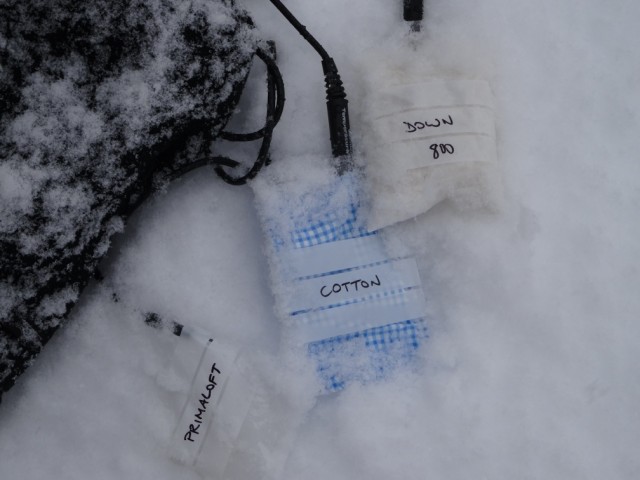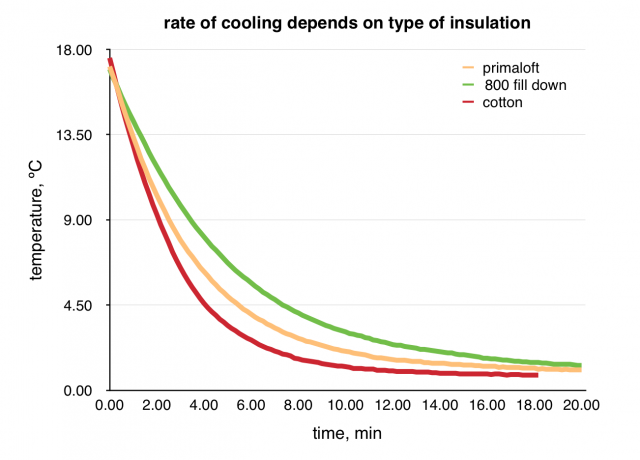Mountain science – preliminary results 4
This experiment looks at the insulation properties of three different fabrics – cotton, primaloft and down.
I did a simple test with my Vernier data logger and some samples. I set the data logger up with three temperature probes and instructions to record the temperatures every 10 seconds for 20 minutes. I placed a two-layer sample of each material in its own small plastic bag (except the down, which was just a load of feathers). I then pushed one temperature probe into each bag between the layers of fabric or into the feathers so that it was completely surrounded. I pressed record on the data logger and put it all out in the snow for about 20 minutes.
Later, when I downloaded the results to my computer, this is what I found.
We can see here that the down is the most insulating material, followed by the primaloft, followed by the cotton. Someone wearing just cotton would cool off quickly in the snow, whereas wearing primaloft or, preferably, down clothing would keep them warmer for longer. This is because what actually keeps us warm is trapped air, and down traps the most air – caught between all the fluffy parts of the feathers.
One of the main ways that humans lose heat is by conduction. In the same way that a metal spoon left in a piping hot drink will soon become hot to the touch, heat is conducted through any medium by hot, rapidly-moving atoms jiggling around and hitting into colder, slower atoms and causing them to jiggle faster, so transferring the energy. Metal is a good conductor, meaning that heat energy transfers quickly through this medium. Sitting on a metal bench in the cold will cool you down faster than just sitting in the snow. Water is also a good conductor, which is why you will cool down quickly even in a warm swimming pool if you stop moving. If you fell into freezing water and couldn’t get out you would likely be dead within ten to fifteen minutes. But air is a relatively bad conductor, so trapping lots of warm air close to our skin keeps us warm. This is why layering clothes is effective, with a small amount of air trapped between each layer.
The best insulating clothing therefore traps air. Natural duck feather down is still the best material we have, despite creating fancy new materials. However down is almost useless when wet, so can only be used in dry environments. The man-made, synthetic alternative, primaloft, is not quite as insulating but it will maintain its effectiveness even when wet. So remember, your best choice of clothing depends not only on what you will be doing, but where and in what conditions you will be doing it.
Insulation samples kindly provided by Will at Rab. Cotton from the local haberdashery!
Thanks to my sponsors:




